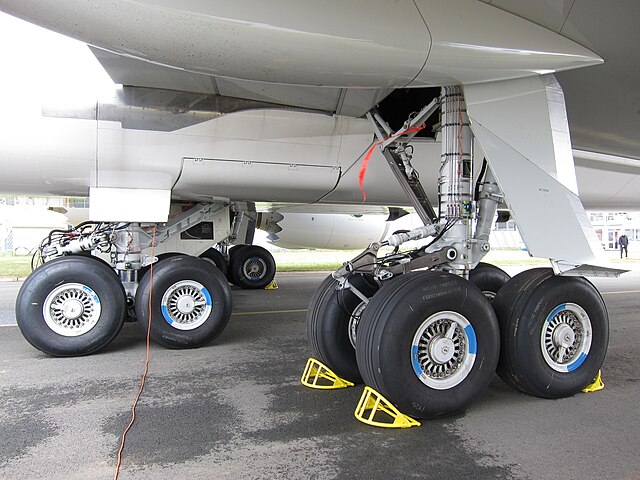
Landing gear
Undercarriage of aircraft or spacecraft / From Wikipedia, the free encyclopedia
Dear Wikiwand AI, let's keep it short by simply answering these key questions:
Can you list the top facts and stats about Landing gear?
Summarize this article for a 10 year old
Landing gear is the undercarriage of an aircraft or spacecraft that is used for taxiing, takeoff or landing. For aircraft it is generally needed for both. It was also formerly called alighting gear by some manufacturers, such as the Glenn L. Martin Company. For aircraft, Stinton[1] makes the terminology distinction undercarriage (British) = landing gear (US).[2]

For aircraft, the landing gear supports the craft when it is not flying, allowing it to take off, land, and taxi without damage. Wheeled landing gear is the most common, with skis or floats needed to operate from snow/ice/water and skids for vertical operation on land. Faster aircraft have retractable undercarriages, which fold away during flight to reduce drag. Landing gear must be strong enough to support the aircraft and its design affects the weight, balance and performance.[3] It often comprises three wheels, or wheel-sets, giving a tripod effect.
Some unusual landing gear have been evaluated experimentally. These include: no landing gear (to save weight), made possible by operating from a catapult cradle and flexible landing deck:[4] air cushion (to enable operation over a wide range of ground obstacles and water/snow/ice);[5] tracked (to reduce runway loading).[6]
For launch vehicles and spacecraft landers, the landing gear usually only supports the vehicle on landing and during subsequent surface movement, and is not used for takeoff.
Given their varied designs and applications, there exist dozens of specialized landing gear manufacturers. The three largest are Safran Landing Systems, Collins Aerospace (part of Raytheon Technologies) and Héroux-Devtek.